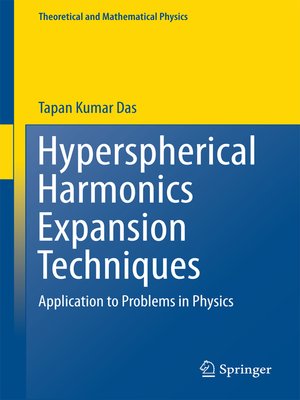Hyperspherical Harmonics Expansion Techniques
ebook ∣ Application to Problems in Physics · Theoretical and Mathematical Physics
By Tapan Kumar Das

Sign up to save your library
With an OverDrive account, you can save your favorite libraries for at-a-glance information about availability. Find out more about OverDrive accounts.
Find this title in Libby, the library reading app by OverDrive.



Search for a digital library with this title
Title found at these libraries:
| Library Name | Distance |
|---|---|
| Loading... |
The book provides a generalized theoretical technique for solving the fewbody Schrödinger equation. Straight forward approaches to solve it in terms of position vectors of constituent particles and using standard mathematical techniques become too cumbersome and inconvenient when the system contains more than two particles. The introduction of Jacobi vectors, hyperspherical variables and hyperspherical harmonics as an expansion basis is an elegant way to tackle systematically the problem of an increasing number of interacting particles. Analytic expressions for hyperspherical harmonics, appropriate symmetrisation of the wave function under exchange of identical particles and calculation of matrix elements of the interaction have been presented. Applications of this technique to various problems of physics have been discussed. In spite of straight forward generalization of the mathematical tools for increasing number of particles, the method becomes computationally difficult for more than a few particles. Hence various approximation methods have also been discussed. Chapters on the potential harmonics and its application to Bose-Einstein condensates (BEC) have been included to tackle dilute system of a large number of particles. A chapter on special numerical algorithms has also been provided. This monograph is a reference material for theoretical research in the few-body problems for research workers starting from advanced graduate level students to senior scientists.







